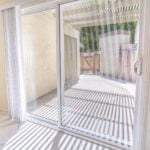Your building’s internet installation can be a complex process.
It involves choosing the right type of network cable and determining the length and other specs for the best performance.
One of the most important decisions you will make during ethernet installation is which type of Cat6a ethernet cable to use.
In this blog post, we’ll discuss the different types of Cat6 cables available so you can make an informed decision when installing ethernet in your building.
● Stranded Cat6 Cable
Stranded Cat6a ethernet cables are the recommended cabling choice for all environments where cable flexibility and frequent movement, such as in a workplace with mobile desks, is necessary. In addition, stranded cables are more flexible, making them easier to bend around corners or into awkward spaces.
They also have larger conductor properties and thicker cores than solid Cat6 cables, making them more adept at handling high-volume data traffic on networks. Due to the improved data transmission performance of stranded Cat6 cabling in high-traffic areas, it is often the preferred option over solid Cat6 cable for installations in homes and businesses with large network infrastructures.
● Riser Rated Cable
Riser-rated Cat6 ethernet cable is the ideal solution for in-wall Ethernet cabling installation. It ensures that the cable is rated to protect against fire and other hazardous situations, making it suitable when connecting computers, phones, and other vital equipment within a building. In addition, it should be used in any situation requiring physical protection from temperature variations, smoke, or flame.
Riser-rated cables are typically used in vertical applications such as from floor to floor within a building or from office space to server rooms. However, since the riser-rated cable is not as flexible as stranded cables, it should not be used in tight turns or around corners due to its higher attenuation levels over shorter distances.
● Plenum Rated Cable
Plenum-rated cat6 ethernet cable is a specialized type of data network cabling containing insulation material certified as low smoke, non-toxic, and flame-resistant. This makes it an ideal choice for air-handling spaces – usually called plenums – where ductwork for heating, ventilation, and air conditioning (HVAC) is used.
Plenum ceilings act as the pathways for the circulated air in some buildings, so plenum-rated Cat6 cables are essential in these areas to avoid toxic gas inhalation or fire hazard – even if it has been subject to accidental damage.
Furthermore, plenum cable is required by local code in most commercial buildings and other multi-unit dwelling complexes due to its unique features. Therefore, knowing when to use plenum-rated cat6 cable is key to abiding by safety regulations.
Conclusion: Choose The Right Ethernet Cable For You
When installing ethernet in your building, choosing the right network cable for your needs is essential. The three main types of Cat6 cables—stranded, riser-rated, and plenum-rated—each have unique characteristics that make them suitable for different applications based on the length and environmental requirements.
By understanding the differences between these three types of cables and choosing one based on your particular installation needs, you can ensure reliable performance for years to come.




